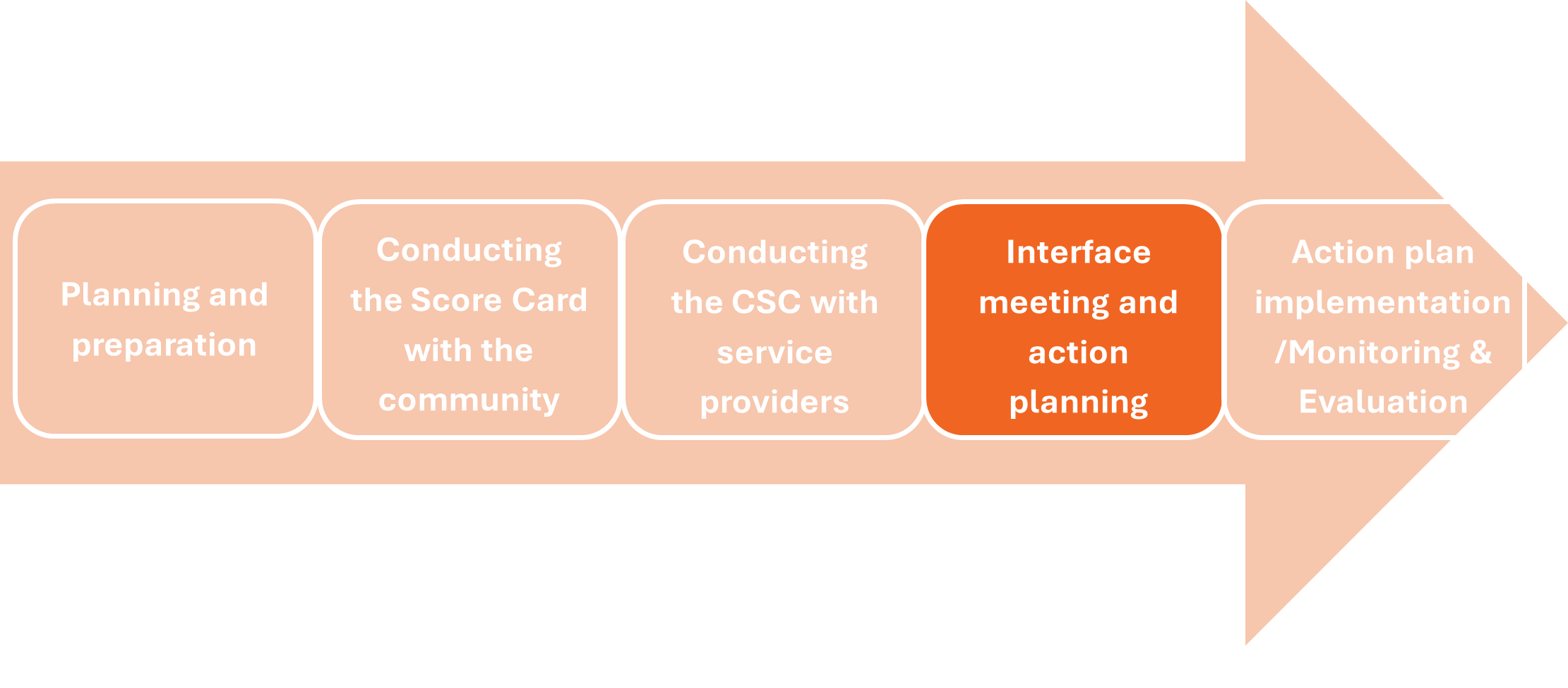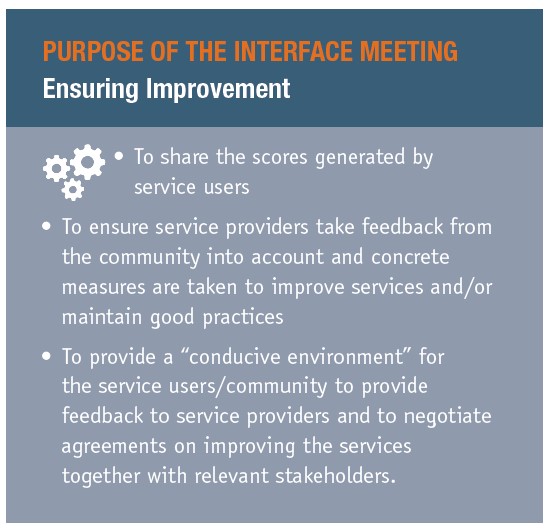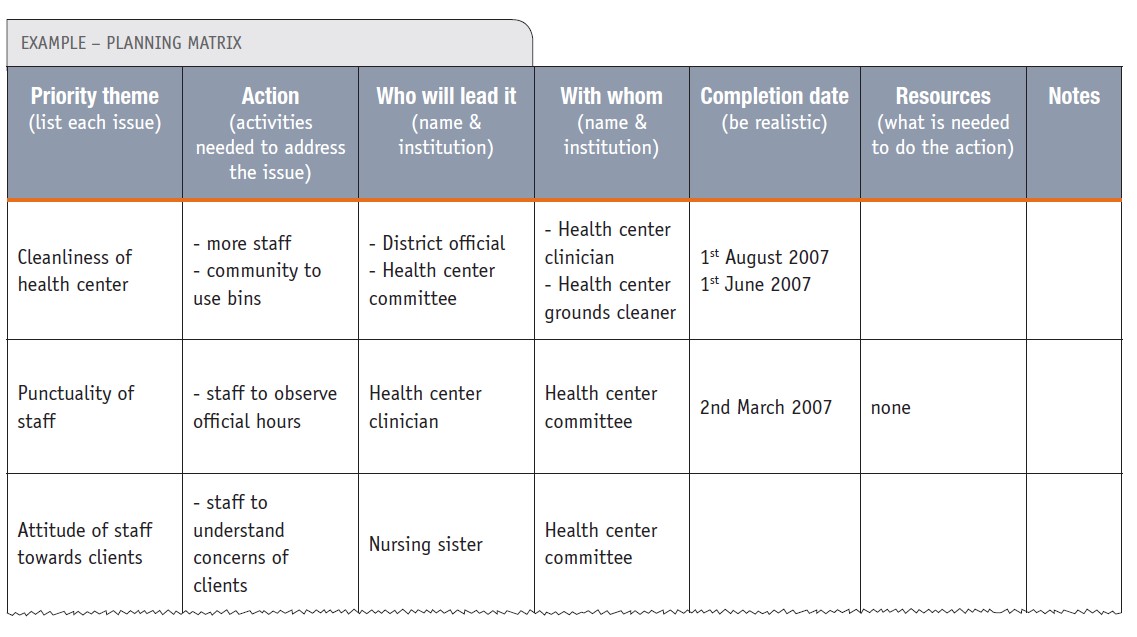
When all the previous steps are completed, there will be scores from the service users, as well as the scores from service providers. The interface meeting is where the service users and providers share and discuss the matrices, their scores and the reasons for the scores. This is also where a joint action plan will be developed.
The interface meeting brings service users, service providers and other interested/relevant parties together. It is important that key decision makers (chiefs, group village headmen, district officials, ministry officials, local politicians, etc.) are present to ensure instant feedback on the issues and responsibility to take issues and the plan of action forward.

Step 1: Start the Interface Meeting
1.1 Open the meeting and welcome everyone.
1.2 Explain the purpose of the meeting and expected duration for the meeting.
1.3 Explain the methodology – this will be a participatory dialogue between service users and providers.
1.4 Call the representatives of community service users to present the consolidated scores for that catchment area. Presentations should include recommendations for how to improve where there were low scores and suggestions about how to maintain the high scores.
NOTE: The interface meeting might become confrontational if not handled carefully and correctly. It is important that a skilled facilitator with negotiation skills and a strong personality is in charge of this meeting. Make sure that service users, as well as service providers, are well prepared for this meeting and understand its purpose. Avoid personal confrontations.
1.5 Next, the service providers will present their scores and suggestions for improvement or sustaining performance, as well as their recommendations based on the suggestions for improvement made by the service users.
1.6 At this point, allow for an open and participatory dialogue/discussion and questions for clarity with each side given ample time to respond to and question the other. Out of the discussions, identify burning issues to resolve and prioritize into action for change.
Step 2: Develop the joint action plan
2.1 After the discussions let the members jointly decide the order in which the indicators/issues should be dealt with, and list them in order of priority on a separate flipchart with their suggestions for improvement. Remember to be realistic about any suggestions for improvement. What is the most possible and realistic? What is short-term and what is long-term?
2.2 Group similar priorities together and agree on an overall theme or name/heading for group.
2.3 Discuss each priority theme as follows and record in the planning matrix.
It is best to keep the duration of the action plan to a minimum of 6 months and a maximum of one year for proper follow up and evaluation.
